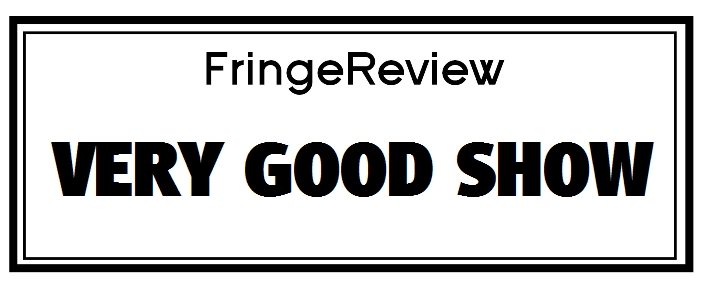FringeReview UK 2019
Fumi Otsuki Violin Sarah Kershaw Piano Recital
Fumi Otsuki and Sarah Kershaw

Genre: Live Music, Music
Venue: St Nicholas Church, Dyke Road, Brighton
Festival: FringeReview UK
Low Down
Fumi Otsuki and Sarah Kershaw gave a violin and piano recital featuring Grieg’s Violin Sonata No. 2 Op 13, Fauré, Macmillan, Bridge, Vaughan Williams and a Kreisler arrangement.
Review
In the three-and-a-half years since he last appeared, violinist Fumi Otsuki has matured as an artist. Today he brought another superb accompanist with him – and Sarah Kershaw’s musicianship extends beyond her solo and accompanist pianism to singing. She recently featured in the Brighton Festival. We need her back here for a solo piano or vocal recital. Or perhaps both.
Otsuki – who’s enjoyed an impressive string of teachers – chooses widely and adventurously. It’s his great strength and one is grateful for an opportunity to hear this peripheral music. None of the works here are by obscure composers, but bar the Faure – and increasingly the Grieg – either they’re less-played, or they’re famed works unknown in this line-up.
Their recital spun off with Grieg’s Violin Sonata No. 2 in G Op 13, coming straight after Grieg’s first characteristic work – his Lyric Pieces Op 12. So the lyricism, both epic and intimate with that edgy harmonic sweetness ( ‘a bon-bon wrapped in snow’ said Debussy waspishly since he borrowed much from him). The open key of G gives this a joyous optimism, tinged with minor regrets.
Otsuki’s tone has developed though he’s still edgy and not always centring – luckily this wore off with the Grieg almost straight away and we were given a stronger reading after the Lento doloroso opening through to the Allegro vivace. Otsuki understands the way Grieg’s lyricism lies, and finds some respite too in the exposed Allegro tranquilo. In the Allegro animato – one of the first of Grieg’s Norwegian dances – we get a vigorous reading. Kershaw distils Grieg’s pianism with point and verve.
Fauré’s Berceuse Op 16, an early work of erotic regret as well as a kind of nocturnal incantation to sleep, Otsuki’s tone captures something of the veiled tonalities of Fauré’s occlusive world. Kershaw has the measure of Fauré’s early pianistic quietism.
James Macmillan’s early (1988) After the Tryst might sound like a kind of ‘after you’ve gone’ but reaches starker doubts and very edgy tonal splinterings – there’s a McShostakovich feel to some of his work and this reminds us of late Shostakovich and early Schnittke: expressive, still within the last gravity of a tonal world. In Otsuki’s hands it sounds – rightly – like a troubled meditation of Boris after his laptop’s smashed by his young partner.
Vaughan Williams’ Greensleeves arrangement is known in its orchestral guise and this version allows an apparently archaic medieval mode to reign – it’s a tune from around 1510, not Henry VIII’s who composed superbly when young. It’s simply terrifying to play on strings, whose vocality doesn’t quite match the mode – it’s interesting on period viols whose spread allows far more. Otsuki’s tone grapples with this, but medieval modes are notorious, slippery and scratch-inducing.
Busoni wrote his Sonatina No. 4 around this same tune around 1910 and it would have been a perfect break for the violinist to allow his pianist to shine – something I noted last time. Kershaw in a couple of Busoni Sonatinas as in so much else would have been invigorating. Being generous with your musical partners is an art many soloists embrace; it refreshes the ear and makes one return grateful for both the break and the following items.
Frank Bridge is often known for his late Romantic pre-war and his increasingly chromatic works thereafter which brought him premieres alongside Alban Berg. His 4 Short Pieces from 1912 follow his early masterpiece The Sea which influenced his pupil Britten in the Peter Grimes Interludes. The fourth of these ‘Country Dance’ is vigorous and more genre-friendly than his more ambitious pieces, vigorous without being overly pastoral – that wasn’t Bridge and we’re grateful for its blow-through freshness here. Otsuki’s tonal plate well suits these kind of works.
Vaughan Williams’ 6 Studies in English Folksong are well known, though mainly for clarinet or even violin. Paying the first two, Otsuki’s less exposed to the terrifying pentatonic and the openness and early-morning expansiveness is quite magical. The second is more vigorous, still memorable, and well-played.
Finally a Kreisler arrangement – the ‘Londonderry Air’ or ‘Danny Boy’ gives a nicely balanced send-off through the rising tune, and Kreisler’s intricate way with both instruments.
Otsuki has certainly come on since 2016, though still has a journey to centre the sweet nutty quality that emerges in some of his more polished playing. He’s still slightly off-note on occasion, scratchy and not yet ready for a full career. But his stronger rhythmic sense and programme, his canny choice of partner – Kershaw’s been with him since February – gives us some hope of distinction, particularly in rare repertoire.


















































